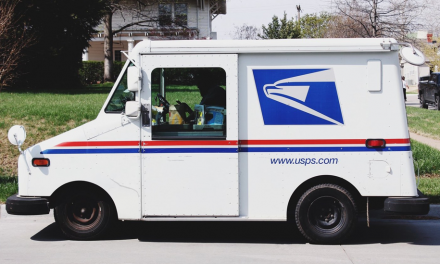
USPS defines new-style part-time rural post offices
The US Postal Service has officially laid out how its network of thousands of rural post offices will look by 2014, as it acts to reduce operating hours in order to cut costs. The Postal Service published a Final Rule in the Federal Register yesterday that provided definitions for as many as 13,000 new-style post offices.
These will include central “administrative post offices” (APOs) that will oversee clusters of part-time “remotely-managed post offices” (RMPOs) around them. RMPOs would have operating windows reduced to two, four or six hours per day.
In areas where the APO-RMPO cluster model is not feasible, there will also be stand-alone “part-time post offices” that will have hours reduced to around six hours a day, but will not report to an APO, but to a USPS district office.
The Final Rule also states that the new-style rural post offices can be run by USPS employees who are not postmasters, if they are reporting to a postmaster.
USPS spokesperson Sue Brennan told Post&Parcel today that the process of notifying rural communities about the changes to the post office network would begin soon.
But, while the Final Rule in the Federal Register also makes changes to the discontinuance process for closing post offices, she insisted that the reorganisation of the network – called the POStPlan – is about reducing hours in rural post offices, rather than closing them.
Brennan said the changes to the discontinuance process as stated within the Final Rule were merely about altering the terminology used in the light of the new definitions of RMPOs and PTPOs, and revisions to post office classification categories.
POStPlan
US consumers have made 350m fewer visits to their local post office since 2005, with USPS stating that while it costs on average $114,000 a year to keep a rural post office open, some of them bring in as little as $15,000 a year in sales.
USPS believes its POStPlan could save $500m a year in operating costs.
Its network has around 26,700 locations designated as post offices – rather than stations, branches or contractor-run units.
Last year it suggested closing 3,700 of its least profitable post offices as part of efforts to cut its multi-billion dollar annual losses. However, with high-profile political objections to the idea of reducing rural access to postal services in this way, in May the Postal Service announced its decision to reduce operating hours at rural post offices instead of closing them.
The Postal Service has been reviewing more than 17,000 of its post offices to identify those with least amount of customer footfall, which could now see operating hours reduced.
Following the review, around 4,500 post offices are likely to be busy enough to keep their eight-hour operating windows each day, with around 9,000 seeing their hours significantly shortened.
The details of the POStPlan are currently being reviewed by the Postal Regulatory Commission, with an Advisory Opinion expected around 23rd August. A phased implementation of the changes will then begin, starting with community notification.
As it reduces the operating times at post offices and turns thousands over to be run by non-postmasters, the Postal Service is aiming to reduce the number of its postmasters by offering buyouts to 21,000.
Yesterday USPS confirmed to US media that around 4,100 postmasters have now accepted its offer of a $20,000 early retirement incentive, with 3,800 of those leaving by the end of July and another few hundred set to leave by the end of September.













Thanks for your article about POStPlan. A few comments: (1) The Postal Service doesn’t know how many people visit the post office because it doesn’t count them, but its Household Diary Study (which surveys a sample of customers) shows that visits are actually up. (2) You imply that the average small rural post office is losing over $100,000 a year, but of the 13,000 POStPlan post offices set for reduced hours, only about 2,000 bring in less than $15,000 a year. At the other end, there are 2,000 that bring in at least $75,000 and average almost $100,000 a year. (3) Of the 17,000 post offices reviewed, 4,500 will remain full-time, but 13,000 (not 9,000) will have their hours reduced (or perhaps you’re not including the 4,000 that will be cut by two hours a day since that’s not “significant”?). (4) I don’t think the Postal Service has said anything about reducing the number of postmasters by 21,000. After the recent retirements, there are probably only about 20,000 active postmasters left, and there are 14,000 post offices (not counting stations and branches) that will remain full-time and that will be staffed by postmasters. For more about POStPlan, visit savethepostoffice.com.
Well, Steve, whoever wrote this article probably got all their ‘info’ from the USPS, which we both know manipulates facts and figures in order to sell their ‘flavor or the day’ ideas. If you ask me, the communities would be better served to have the post office boxes (and currently non-existent parcel lockers) in daily operation, then have a mobile post office visit the community once a week for 8 hours to transact other business. The mobile post office could visit each community on a rotating basis and take all accountable mail and parcels, etc. to the appropriate ‘back-up’ post office after servicing the community. If you ask me, this would be serving the communities better than 2 freaking hours a day! Whoever came up with this POstPlan is a freaking idiot and should be bannished to a rural community that they have forced this ‘service’ on. Perhaps if they lived like a REAL person, they would see that they will NEVER get their mail or thier packages or anything else. Good way to do away with the post office that was Constitutionally promised to the American public. I call this a grave failure to do their jobs.